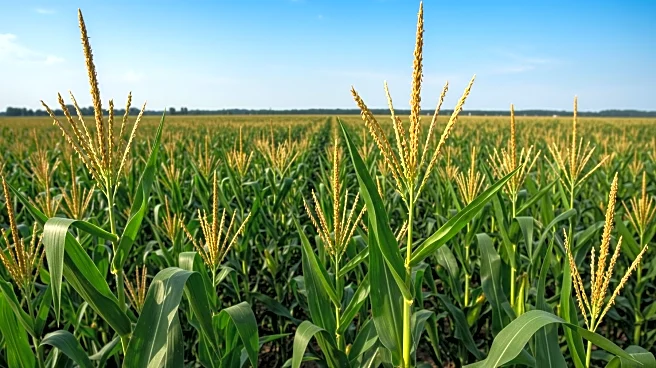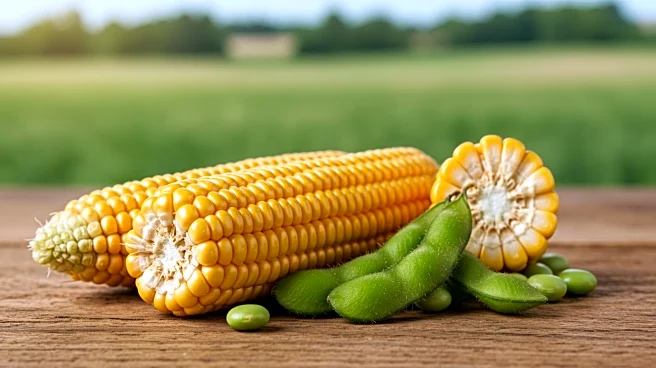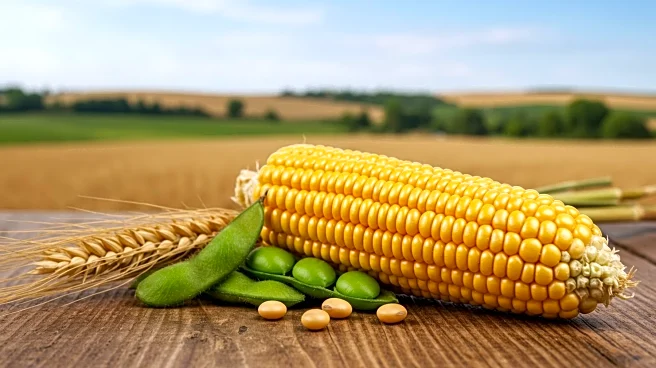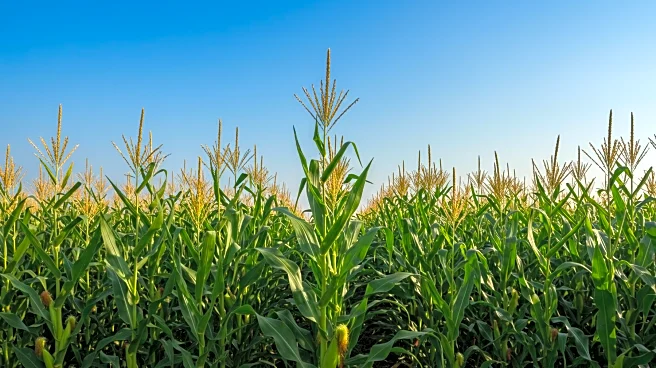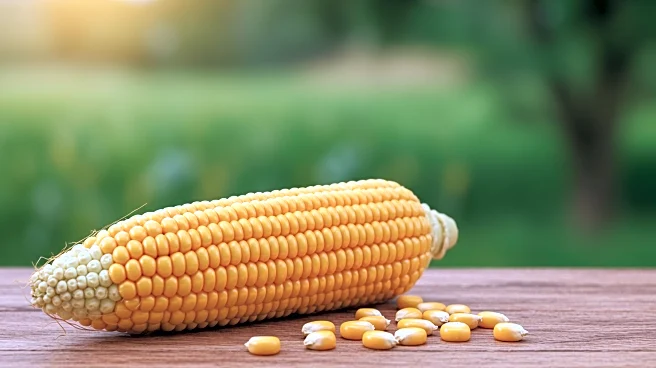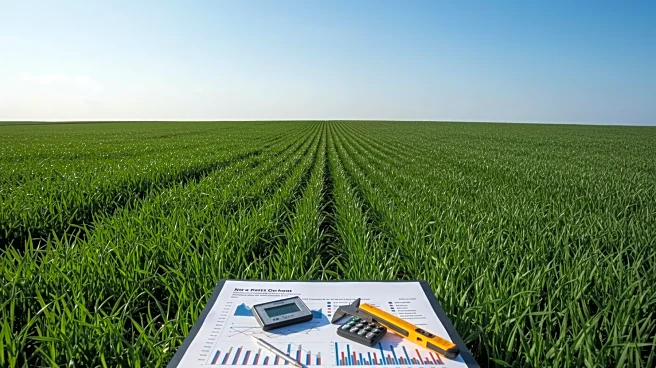What's Happening?
The USDA National Agricultural Statistics Service (NASS) has released updated 2025 planted acreage estimates for major crops, including corn and soybeans. The report indicates an increase in corn planted area from 95.2 to 97.3 million acres, while soybean acreage has decreased from 83.4 to 80.9 million acres. This shift towards more corn and fewer soybeans has been consistent since the USDA's initial 2025 acreage projections. The data used for these estimates comes from the USDA Farm Service Agency (FSA), which tracks acreage enrolled in farm programs. The report suggests that the increase in corn acreage could lead to a higher supply, affecting market prices.
Why It's Important?
The increase in corn acreage is significant for the agricultural market as it suggests a potential oversupply, which could lead to lower corn prices. This shift in acreage reflects farmers' decisions to plant more corn, possibly due to market conditions or expected profitability. The decrease in soybean acreage could lead to tighter supply and potentially higher prices for soybeans. These changes in crop acreage are crucial for stakeholders in the agricultural industry, including farmers, traders, and policymakers, as they influence market dynamics and economic outcomes.
What's Next?
The agricultural market will likely respond to these changes in acreage estimates. Farmers may need to adjust their strategies based on the expected supply and demand dynamics. Traders and policymakers will monitor these developments closely to anticipate price movements and make informed decisions. The USDA's future reports will provide further insights into how these acreage changes impact overall crop production and market conditions.
Beyond the Headlines
The reliance on FSA data for acreage estimates highlights the importance of farm program enrollment in understanding agricultural trends. This approach provides a more accurate picture of planted acreage, reducing the need for extrapolation from surveys or satellite imagery. The trend towards earlier enrollment in farm programs may continue, influencing future acreage estimates and market forecasts.


